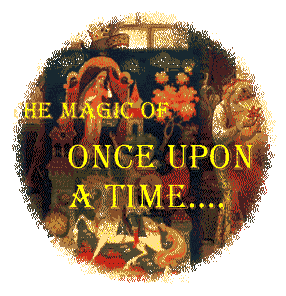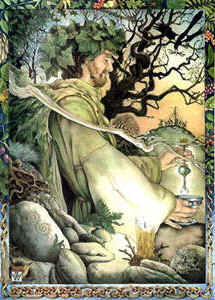|
Narrative Logo - Click for Main Menu Lecture III: The Characteristics and History of the Oral Tale
The Universal Green Man on the search for the Grail Nuts and bolts before we start. Be sure to check the Announcements Page. Discussion List responses to the Lectures can include links to folklore you might want to share, family legends and tales, your own experience with folk material, or questions you might want to pose to your fellow students or professor! Contents of Lecture 3. Yet - Another Cinderella Story Because you were curious, another Cinderella story. A look back. Characterizing the Oral Tradition We have seen that Oral Tales are characterized by certain things. They are EVER CHANGING INTIMATE DARING IMAGINATIVE PERSISTENT They can also be categorized into various types: Animal Tales, Fairy Tales, Ghost Stories, Urban Legends, real Legends, Origin Stories, and so forth. See Folklore Chart. History of a Folktale--patter to print Fairy tales, nursery rhymes, "tall tales," ghost stories, chants, jokes, songs, "old wives' tales," spells, parables, urban legends, and, of course, fables are all part of this age-old tradition. These folk creations may circulate in cultures for centuries before they are captured in print. Tales enchant us for several reasons. They beguile us because they are always changing, because they are often told in an atmosphere of intimacy, because they are sometimes more daring and exciting than what appears in print, and because they necessarily speak to our deepest hopes and fears in a sensory, imaginative way. Most of all, they persist - a quality that carries infinite implications, in itself. The place of Folktales in Literature The transmission of folk tale to printed book - fixing the audience. |

